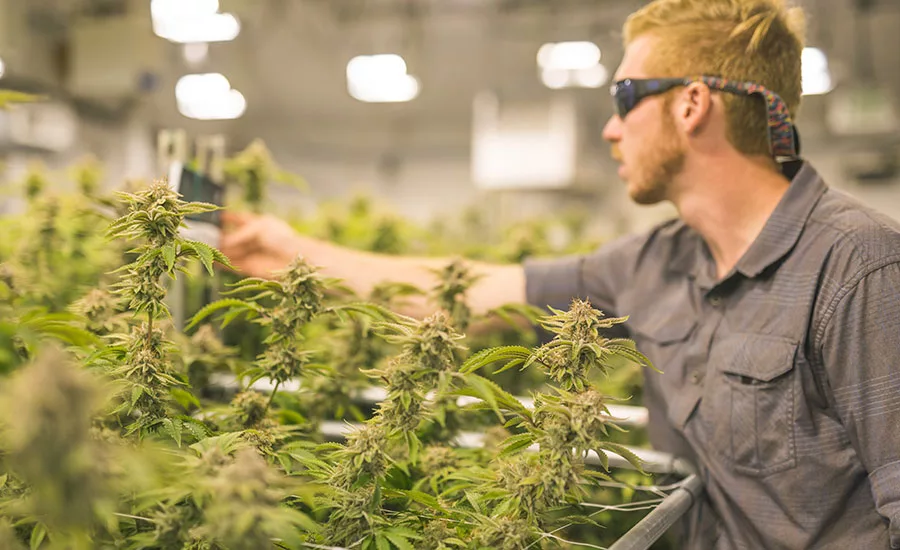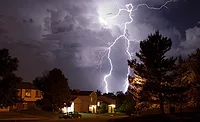Facing Compliance Challenges, Surveillance Proves Essential to Cannabis Industry Success
72% of cannabis operators fail to comply with security and surveillance requirements.

The international market for cannabis is projected to hit $31.4 billion by 2021, according to cannabis market research firm the Brightfield Group. In late 2017, the global market was estimated to be worth $7.7 billion, with 90% of global sales driven by the U.S.
With so many new businesses and operations in the emerging cannabis market in the U.S., the field is beginning to adopt many risk management best practices, even above and beyond the myriad compliance requirements that cannabis product growers, producers and vendors must abide by.
“Now, there’s a very different mindset among people in the industry compared with those who got into the cannabis industry early – there’s more business acumen, and a desire to get security right the first time,” says Sy Alli, Chief Operating Officer for Olympus Consulting Group, LLC and former Director of Corporate Security for Dixie Brands, Inc., the first cannabis-based company to be ranked in the Security 500. Alli now spends his time advising cannabis enterprises on security and risk management planning. He says that security programs are improving rapidly due to the maturation of the industry, the emergence of subject matter experts and more security professionals or law enforcement professionals looking into the cannabis industry as a viable career move.
Management also plays a large role: “More business-minded people are getting into this industry, and that makes it easier for security professionals to talk to their management about risk, compliance and continuity,” Alli says.
Having business leaders who have researched the field and understand the risks and costs of going into the cannabis industry are more likely to meet with success, Alli adds.
Ethan Maxon, Director of Key Accounts and International Sales for Salient Systems, says that new players in the cannabis industry face an uphill climb, both in terms of operations and shifting legislation. Companies grapple with how they are going to package, store, transport and sell product, all while cannabis is federally a Schedule I drug.
They’re also facing regulatory commands that change from state to state. According to Blake Albertsen, Salient Regional Sales Manager for the Pacific Northwest, part of the business plan that is required by the state is a physical security plan, which will outline each security measure in the organization. This includes video surveillance over cash handling areas, entry and exit points, and more.
The cannabis industry has some unique requirements, especially in growing facilities. Plants are sensitive to light and temperature; the nano wavelengths of illumination have to be carefully controlled.
Albertsen says: “Cameras can work in low-light or no-light environments. It is a must when plants are at rest and in a dark environment. (For compliance), cameras still have to show video of head, hands and feet as well as the plants that are being grown in the facility. Lots of cameras have IR illumination that will allow the plants to be visible; however, this can disrupt the plants when they are in rest mode. A lot of camera manufacturers have (non-IR) technology that will allow for plants to be visible with minimal illumination efforts.”
Tracking diseased plants is also a requirement for growing operations; if a plant is diseased, the enterprise has to prove that is was properly disposed of. “The plant will need to go to quarantine for 72 hours or longer, depending on state requirements, and the state must be notified to come and examine the diseased plant that is being taken out of production prior to the plant being able to be destroyed,” Albertsen says.
Maxon adds that, given the increasing usability of video management systems and cannabis enterprises’ camera coverage, operators could use the video surveillance system to track the plant’s movement throughout a facility as a video audit trail, proving that the business is in compliance with regulations.
Alli says that security cameras and electronic equipment is now more conducive to the cannabis industry than when he started developing the corporate security plan for Dixie Brands in 2014. The clarity of video and ease of operations helps operators, especially in states like Colorado, when an inspector can walk in at any time and ask to see security video footage. “Compliance is big,” Alli adds, “That could sink you. Your security program must be sturdy and transparent, and it has to be done right from day one.”
According to Adherence Compliance, a Denver-based company specializing in cannabis compliance, about 76% of all operators fail at least on inventory requirements, 72% on security and surveillance requirements, 67% on labeling and packaging, 64% on business records, and 53% on transport and storage. Operators in California average more than 16 compliance infractions per inspection, Forbes reports.
However, for many of these startup companies, cost is a major factor when it comes to security. “Grow operations can go really cheap because of the upfront costs to designing and installing a security system, but this is risky – an inspector can come in and check the video coverage,” Maxon says. If the inspector can prove the business is not recording for the minimum amount of time required by the area, they can levy fines or shut down operations until the business is back in compliance, he adds.
Determining what security system would fit your enterprise? According to Ethan Maxon at Salient Systems, you should ask yourself these key questions before evaluating technology options.
- Do we have a security plan in place?
- How many cameras do we need, and where should we place them?
- What lighting levels do we need to address, and where would lighting impact our operations and product?
- How long do we need to retain our video?
- How many frames per second do we need?
- If there’s an outage or device failure, what redundancy does this system give me and will it keep me in compliance?
Looking for a reprint of this article?
From high-res PDFs to custom plaques, order your copy today!








